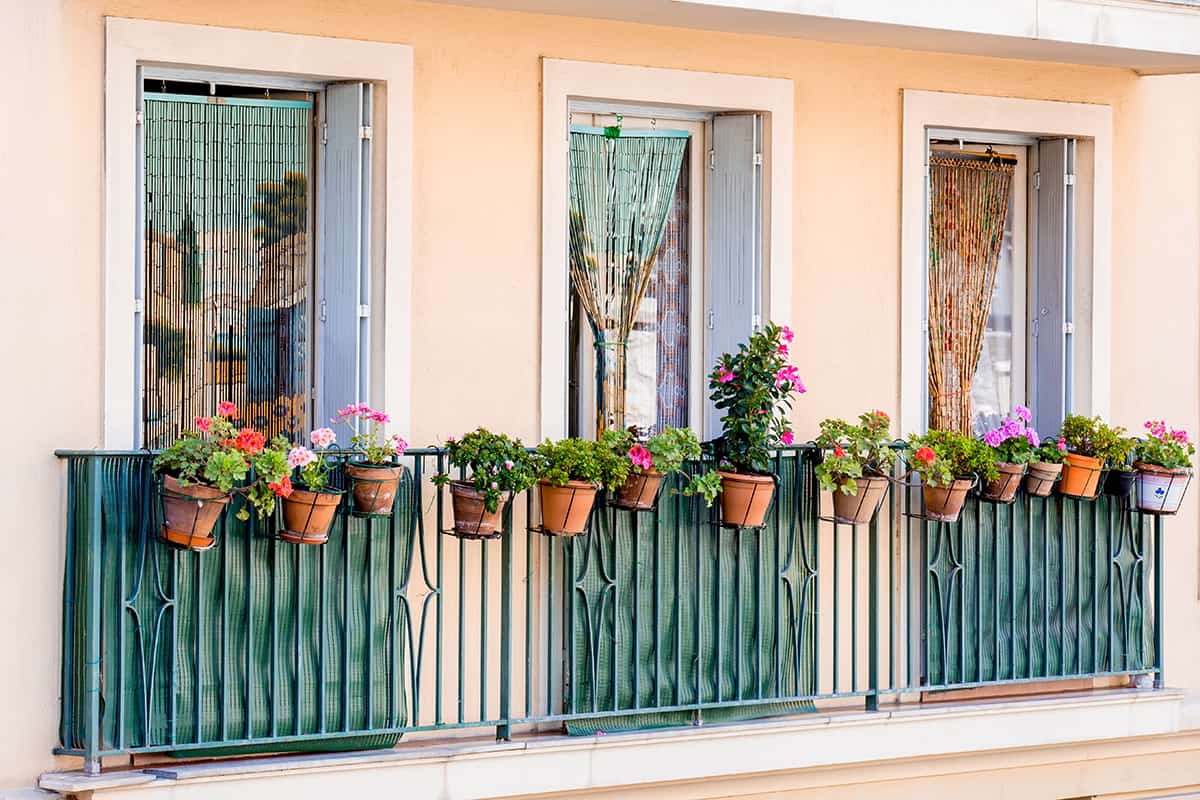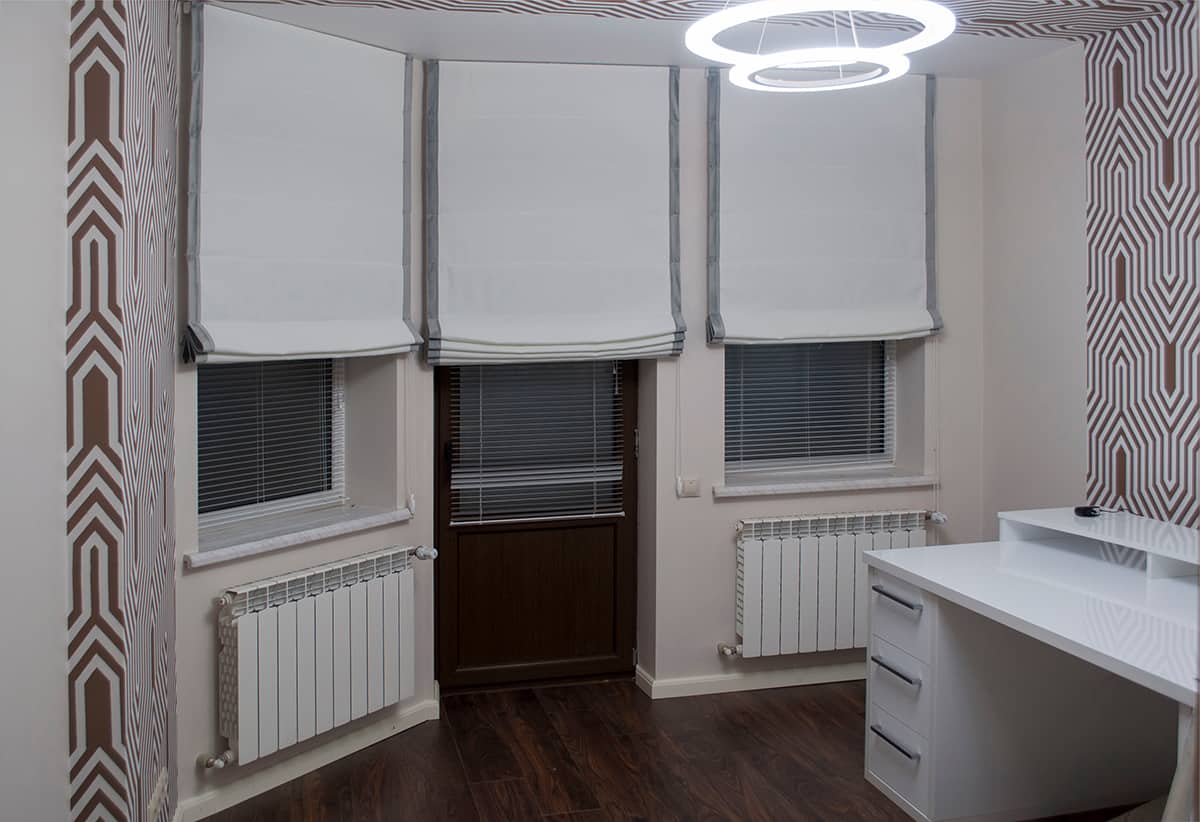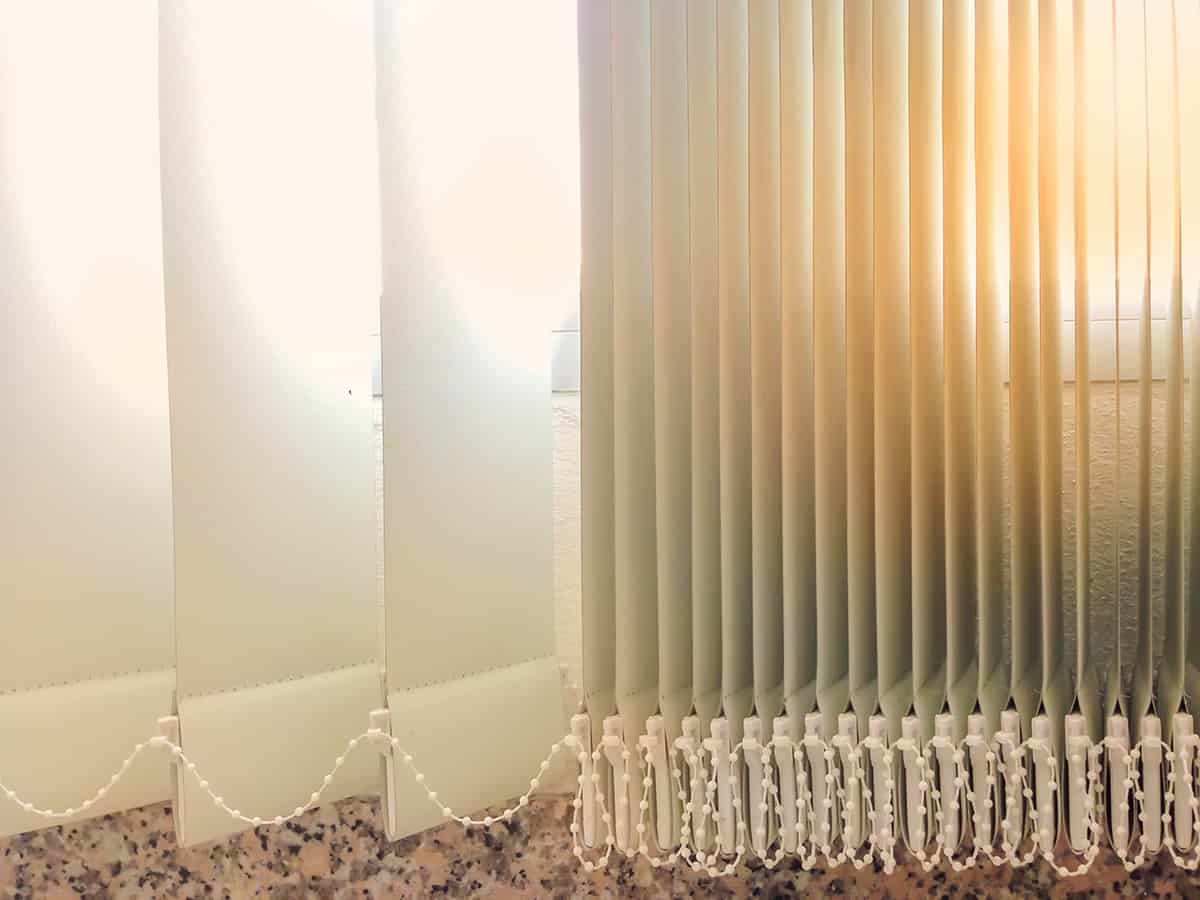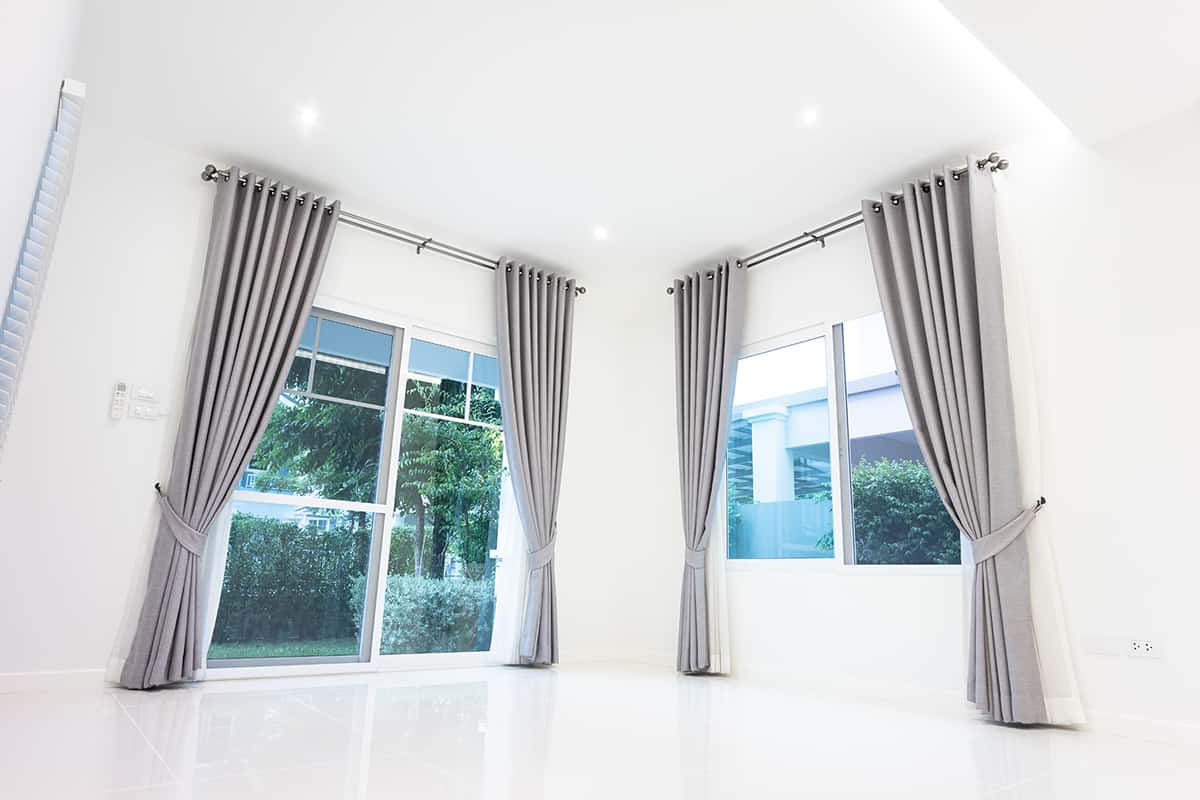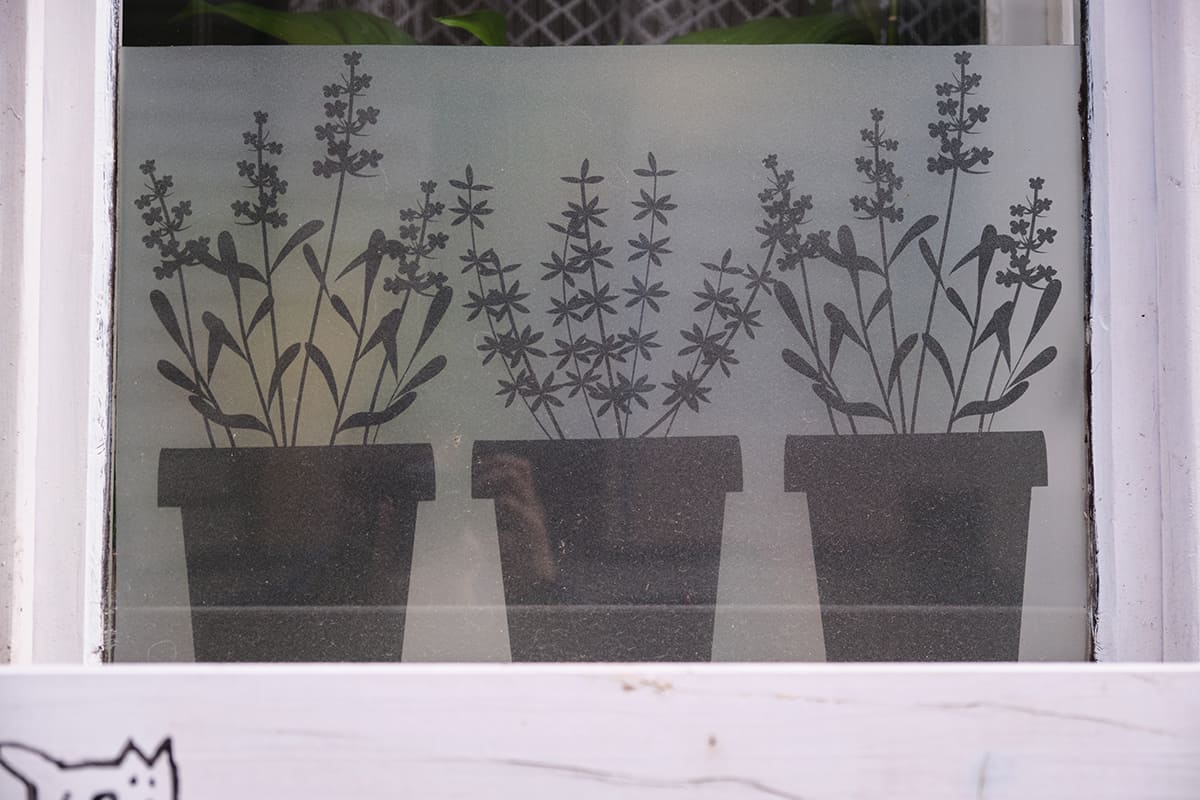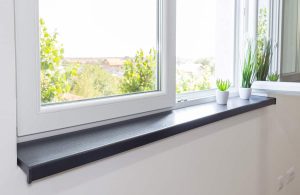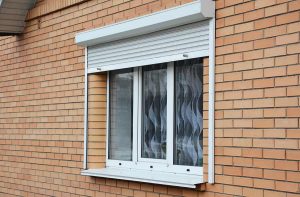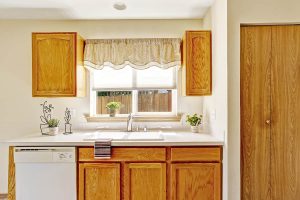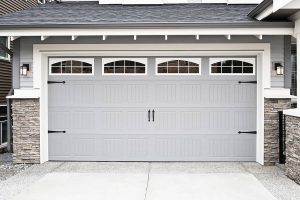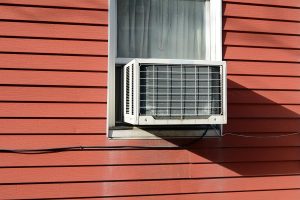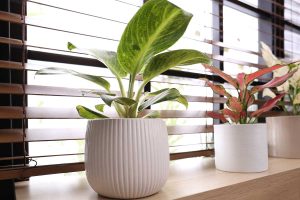Choosing a front door with a window in it is a popular way to allow more light into the entryway, and some people also like to see who is at their door before opening it up to visitors. However, there are also some drawbacks to having a window in your front door, such as a lack of privacy or light flooding in early in the morning and waking you up.
To solve any issues you might have with a front door window, you can use a window covering such as blinds, curtains, or a privacy film applied directly to the glass. Here, we investigate the pros and cons of different types of front door window covering ideas.
Best Front Door Window Coverings
The best front door window covering for you will take into account both its style and functionality.
Interior designer Alizee Brion says, “Knowing how a fabric will drape, whether it will stretch out over time, and how it is going to look with different types of light coming through are all important technical aspects that will affect how the window treatment will look once installed.”
Roman Blinds
Roman blinds are a type of window or door blind made from fabric that is folded over on itself, concertina style. These blinds are beneficial over a window in a door because you can have them open or closed to varying degrees, depending on how much light you want to allow in, or how private you want your entryway to be.
When the Roman blind is completely closed, the fabric will hang flat to cover the window, or when open, it will be folded at the top of the window. You can also have the blind partially open, allowing light in through the lower portion of the glass.
This works well when you want privacy without blocking all of the light because you can close the blind at eye level so it will be difficult for people to see in while still having a bright entryway.
Venetian Blinds
Venetian blinds are made up of horizontal slats that are joined together via vertical tabs, strings, or ribbons. They can be made from metal, plastic, or wood and come in various colors, finishes, and sizes.
These types of blinds can be altered so that the slats are positioned at various degrees, depending on the amount of light you want to let in. They are easy to adjust so that you can quickly open or close them at different times of the day.
Vertical Blinds
Vertical blinds are usually made from fabric or vinyl, and they are a popular window covering in schools, offices, and public buildings because they are functional yet very low cost. They can work well as a front door window covering if you have a long, vertical glass panel because they will run the whole length of your window.
They can have a tendency to get tangled, so you may want to avoid them if you have young children because they can become an annoyance or a safety hazard. They also aren’t considered to be the most stylish option. However, they can be a practical choice if you are on a tight budget.
Bead Curtain
Bead curtains are made from several long lengths of cord with beads strung on them, and these are secured together at the type to create a drape of beads. They are commonly used as a means of preventing bugs from getting into the home during the summer months when back doors are left open for airflow.
They can work well as a way of creating privacy at doors with windows or glass panels while still allowing some light to pass through so that an entryway isn’t completely darkened.
You could hand the beaded curtain over the top of the door frame so that the beads remain in place even when the door is opened, or you could hang the curtain on the door itself so that when the door is opened, the beads move with it.
Some people struggle with the sensory effects of beaded curtains, while others love them. They are most commonly found in natural wood-colored beads, which can create a warm and earthy aesthetic at your front door.
Blackout Drapes
If light flooding into your entryway is a problem, then blackout curtains can be a game-changer. For anyone living in a bungalow, apartment, or split-level home, the light coming into the home through the front door can be seen from some of the bedrooms in the house.
If early morning light is seeping underneath your bedroom door and waking you up, then your best solution will be to hang a blackout curtain over your front door.
This can be pulled to the side and kept in place with a curtain tie-back during the day if you wish and drawn closed in the evenings when you go to bed. Blackout drapes tend to have good thermal performance levels, which can also help prevent heat from escaping the house via the front door or prevent cold air from getting into the home.
Choose blackout drapes in a fabric that coordinates with your interior decor, and these will add style and texture to your home. Curtains at doorways can be a good idea even if you aren’t having an issue with your front door window because they add a softness to a space while helping it to feel more cozy and welcoming.
Sheer Drapes
If privacy is your problem more than light, then sheer drapes over your front door windows could be the solution. Sheer drape will give you a moderate level of privacy while still ensuring the entryway doesn’t have to be dark.
During daylight hours, most sheer drapes will stop anyone outside the home from being able to see in. They may be able to make out some dark shapes or movements, but they won’t be able to see any details or identify specific people.
If it is dark outside and you have lights on inside the home, then people outside will be able to see shadows when they look through your sheer drapes. Sheer drapes will diffuse light, allowing light to get into the home but giving it a more mellow vibe. You can install a sheer drape to the door itself or to the frame over the door.
The drape can then be pulled and tied to one side in the event that you want to allow more light in, or you want to see who is outside your house. One of the other positive aspects of sheer drapes is that they can be picked up really inexpensively and are much more affordable than blinds or curtains.
They come in various colors, though white sheer drapes are the most popular. You can also find sheer drapes that have embroidery on them or drapes that are fringed with tassels, pom poms, or feathers.
Privacy Window Film
Privacy film for windows is a budget-friendly way of improving privacy levels at your front door while maintaining a good level of light. Privacy film is sold by the roll and can be cut to size so that you can perfectly customize it to the size and shape of the windows in your front door. This makes it especially useful for front doors with unusually shaped glass inserts, such as port holes.
By using privacy film, you can make the regular glass appear as etched or frosted glass at a fraction of the price compared with having new glass inserts installed. Privacy film adheres to the glass itself so that no means of fixing is required. If you don’t own your home, then you can easily remove privacy film when your tenancy ends, and it won’t leave any damage behind.
Using privacy film tends to be the most cost-effective way of creating privacy at front door windows, but it won’t give you the soft appeal of some window coverings such as curtains. You can find various types of privacy film, such as geometric patterned film, floral patterned film, or plain frosted film, allowing you to match your choice to the style of your home.
Different patterns of the film can also result in various levels of privacy and light diffusion. For example, frosted privacy films will usually create the most privacy, while patterned films can have more transparent sections that give a lower level of privacy yet allow more light to pass through.
Window Valance
A window valance is a traditional type of window covering that is most popularly used on kitchen windows and glass panels in front and back doors. A window valance is a piece of fabric that runs across the top part of a window, covering around a quarter to a third of the whole window.
These types of window coverings can be useful to improve privacy levels because they block out the eye-level view, so people may be able to see you moving around within the home, but they won’t be able to see your face. A window valance is more useful as a decorative window covering rather than a functional window covering.
